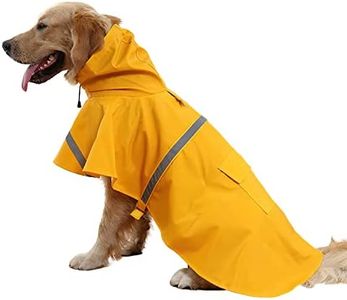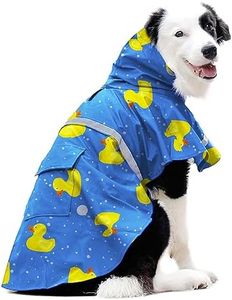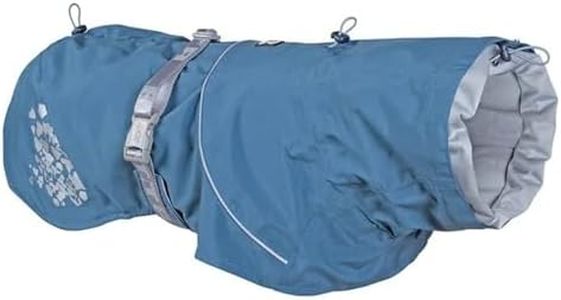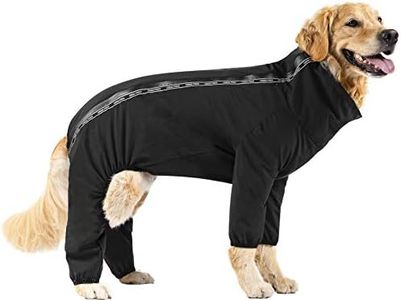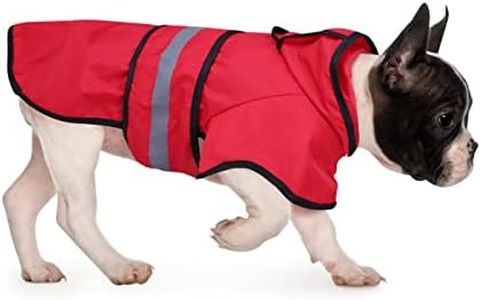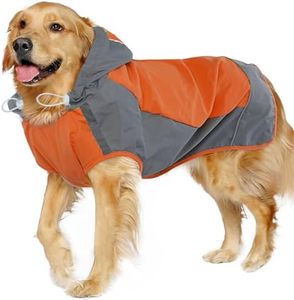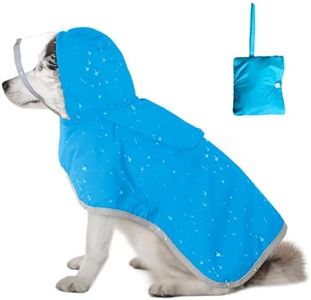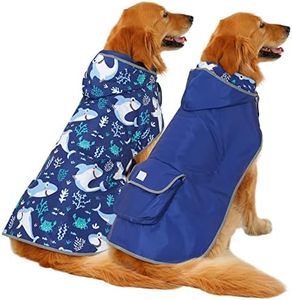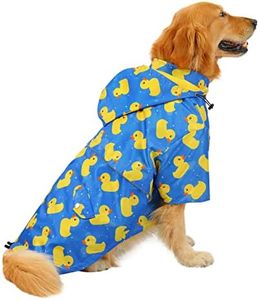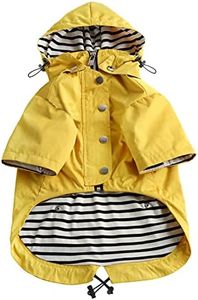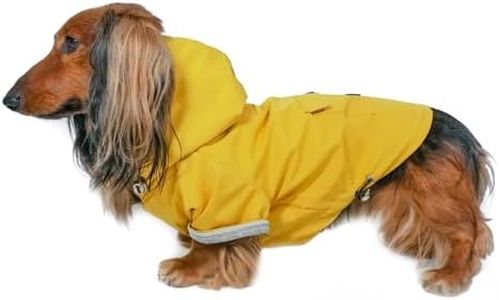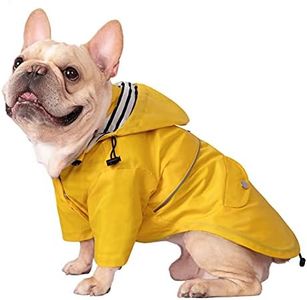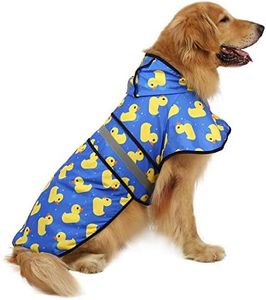We Use CookiesWe use cookies to enhance the security, performance,
functionality and for analytical and promotional activities. By continuing to browse this site you
are agreeing to our privacy policy
10 Best Dog Raincoats
From leading brands and best sellers available on the web.Buying Guide for the Best Dog Raincoats
Choosing the right dog raincoat is all about making sure your furry friend stays dry, comfortable, and happy during wet weather. Before shopping, think about your dog's size, coat type, activity level, and how often they'll be wearing the raincoat. Consider what types of walks you usually go on—which may include early morning strolls or nighttime adventures—and make sure your dog can move freely in the raincoat. Prioritize comfort, ease of use for both you and your pup, and features that match your dog's lifestyle needs.Size and FitSize and fit refer to how well the raincoat matches your dog’s body. A raincoat should cover the back and sides properly without restricting movement, while also allowing your dog to sit, run, and play freely. To pick the right size, measure your dog from the base of the neck to the base of the tail, as well as around the chest. Dog raincoats usually come in size ranges like small, medium, and large, with specific measurements in inches or centimeters. For slim or broad-chested breeds, look for adjustable straps or sizing charts that help avoid too tight or too loose fits. A good fit keeps your dog comfortable and prevents the raincoat from slipping off.
Material and WaterproofingThis spec is about the type of fabric used and how well it blocks out water. Common materials include polyester, nylon, or PVC, each with different levels of breathability and water resistance. Waterproof raincoats are best for heavy rain, while water-resistant options may work for light drizzles. Some coats add reflective or breathable layers for added comfort or safety. If you live in a very wet area or take long walks, go for something fully waterproof and durable. For occasional or brief outings, lighter and water-resistant materials can be sufficient.
CoverageCoverage describes how much of your dog’s body is protected by the raincoat. Some coats only protect the back, while others extend to the belly, chest, or even include a hood. More coverage is important for dogs with thin fur, small breeds, or those who get cold easily. If your dog is active and doesn't mind wearing more, you can choose a design that covers more of the body. For dogs that get warm quickly or prefer minimal gear, a basic back-and-side covering is usually enough.
Ease of UseEase of use refers to how simple it is to put on and remove the raincoat. Features like velcro, zippers, or snap buttons can make dressing your dog quicker and less stressful. Consider if your dog tolerates wriggling into sleeves or prefers step-in or wrap-around styles. Choose designs with easy-fastening closures if your dog is energetic or impatient. For older or sensitive dogs, avoid styles that require lifting legs too much.
VisibilityVisibility features help make your dog stand out in low light. Look for raincoats with bright colors or reflective strips, especially if you walk early in the morning or at night. Reflective details are a good safety measure, making your dog easier to spot by drivers and cyclists. If visibility is a priority for your walking routine, pick a raincoat with bold colors or multiple reflective accents.
AdjustabilityAdjustability is about how well you can tailor the raincoat to your dog's shape using straps, drawstrings, or toggles. Adjustable parts ensure a snug fit and help stop the raincoat from shifting or coming undone as your dog moves. If your dog has a unique body shape or is between sizes, adjustable raincoats are easier to customize for comfort. For dogs that grow or change weight (like puppies), adjustability gives you extra flexibility.
WashabilityWashability describes how easy it is to clean the raincoat after muddy walks. Most dog raincoats are machine washable, while some may require hand washing or spot cleaning. If your dog enjoys running through puddles or gets dirty often, machine washable options will save you time. For occasional use or careful dogs, washability may be less important, but it's still good to check the label for care instructions.

